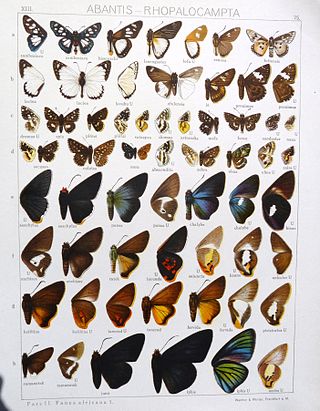
The green hairstreak is a small butterfly in the family Lycaenidae.

The Hillersjö stone, listed in the Rundata catalog as U 29 and located at Hillersjö, which is about four kilometers north of Stenhamra on Färingsö, is a runic Younger Futhark inscription that tells, in Old Norse, the tragic real life family saga of Gerlög and her daughter Inga. It is the longest runic inscription in Uppland and the second longest one in Sweden after the Rök runestone.

The Färentuna runestones are 11th century runestones labelled U 20, U 21, and U 22 in the Rundata catalog that are located in Färentuna, Uppland, Sweden. Runestones U 20 and U 21 were registered separately although they come from the same original runestone and consequently are called U 20/21. The runestone U 20/U 21 is probably most interesting as it, together with the Hillersjö stone and the Snottsta and Vreta stones, tells the story of the family of Gerlög and Inga. All of the Färentuna runestones are inscribed in the younger futhark.
Pseudalbizzia pistaciifolia is a species of plant in the family Fabaceae. It is found in Colombia, Ecuador, and Venezuela.
Aegoceropsis fervida is a species of moth from the genus Aegoceropsis. It is endemic to the central and southern regions of Africa, ranging from Ghana to Zimbabwe.

Inga and Anush Ashoti Arshakyan or the Arshakyan Sisters are an Armenian folk singing duo. The sisters represented Armenia in the Eurovision Song Contest 2009, eventually finishing in 10th place in the final.
Euxesta fervida is a species of ulidiid or picture-winged fly in the genus Euxesta of the family Ulidiidae.
Acrolophus fervidus is a moth of the family Acrolophidae described by August Busck in 1912. It is found in Costa Rica, Mexico and Texas.

Coeliades fervida is a butterfly in the family Hesperiidae. It is found in eastern, south-eastern and central Madagascar. The habitat consists of forests and forest margins.
Eupithecia fervida is a moth in the family Geometridae first described by András Mátyás Vojnits in 1984. It is found in China.
Paracles fervida is a moth of the subfamily Arctiinae first described by Schaus in 1901. It is found in Brazil.
Sonorarctia fervida is a moth in the family Erebidae. It was described by Francis Walker in 1855. It is found in Guatemala.
Lipotriches fervida is a species of bee in the genus Lipotriches, of the family Halictidae.

Inga is a genus of moths of the family Oecophoridae.
Phytoecia fervida is a species of beetle in the family Cerambycidae. It was described by Francis Polkinghorne Pascoe in 1871. It is known from South Africa.
Phyllophaga fervida is a species of scarab beetle in the family Scarabaeidae. It is found in the Caribbean Sea and North America.

Erythrodiplax fervida is a species of skimmer in the dragonfly family Libellulidae. It is found in the Caribbean Sea and South America.
Scotogramma fervida is a species of cutworm or dart moth in the family Noctuidae first described by William Barnes and Foster Hendrickson Benjamin in 1912. It is found in North America.

Nomada fervida is a species of nomad bee in the family Apidae. It is found in North America.







